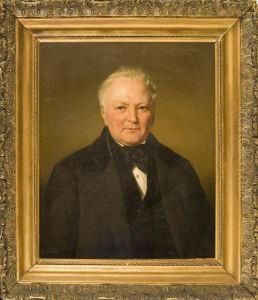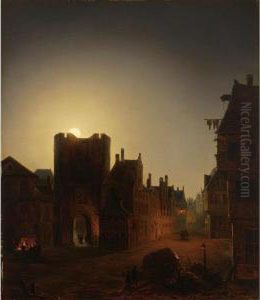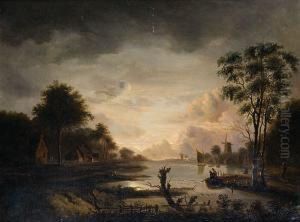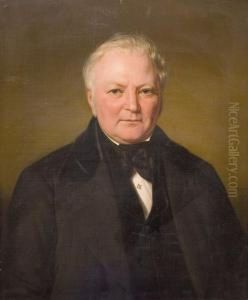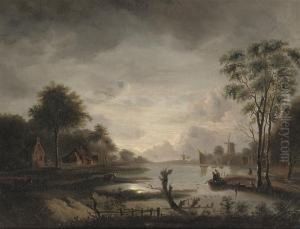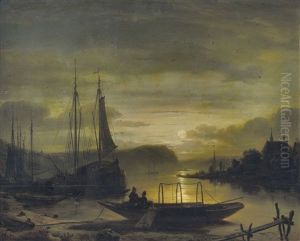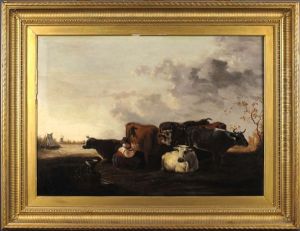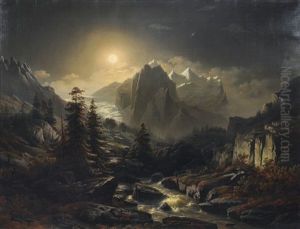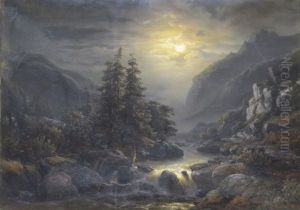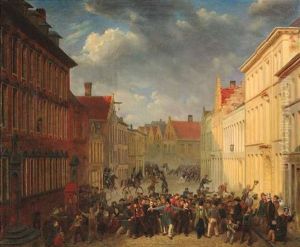Jacob Johann Verreyt Paintings
Jacob Johann Verreyt, also known as Jacques Jean Verreyt, was a Flemish painter born around the year 1700, although the exact date and place of his birth remain uncertain. His artistic career was primarily centered around the first half of the 18th century, a period known for the Rococo style that was prevalent in European art.
Verreyt is best recognized for his work as a landscape painter. He specialized in creating idyllic and pastoral landscapes that often featured classical ruins and figures. These landscapes were typically imbued with a sense of calmness and harmony, reflecting the aesthetic values of the time. Verreyt's compositions were influenced by the works of other Flemish and Dutch landscape painters, incorporating elements of the naturalistic detail and atmospheric perspective that were hallmarks of Northern European landscape painting.
Throughout his career, Verreyt remained relatively active and produced a considerable number of paintings. However, despite his prolific output, he did not achieve the same level of fame as some of his contemporaries. Verreyt's works were appreciated by collectors and connoisseurs during his lifetime, though he never rose to the prominence of artists such as Canaletto or Watteau, who were defining figures of the Rococo movement.
Jacob Johann Verreyt died in 1759. While his work may not have earned the enduring fame of some of his peers, it represents an important facet of the landscape genre during the 18th century. His paintings are now held in various art collections and occasionally appear at art auctions. They continue to be studied by art historians interested in the development of landscape painting in Europe during the Rococo period.
